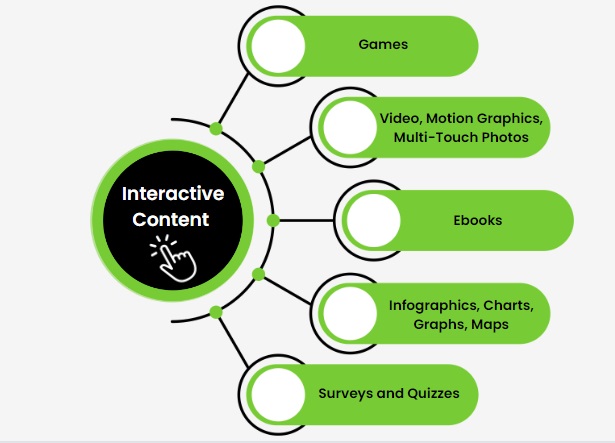Utilizing Interactive Content to Boost Engagement in B2B Digital Marketing Strategies
Meta Description: Explore how interactive content can enhance B2B marketing efforts by increasing engagement, improving SEO, and generating leads. Discover actionable strategies and real-world examples.
Interactive content is revolutionizing how B2B marketers engage their audience. By transforming passive consumption into active participation, businesses not only capture attention but also foster an enriched user experience. In the following sections, we'll delve into the definition of interactive content, its benefits in B2B marketing, practical tips for implementation, and much more.
Author: Viktor Novak, Digital Marketing Specialist with over 5 years of experience in SEO and engagement strategies for various B2B companies.
What is Interactive Content?

Interactive content can be defined as any content that engages users in a way that they can interact with it, whether through direct feedback or participation. Unlike traditional content, which typically consists of static text or images, interactive content allows users to become active participants. Examples of interactive content include:
- Quizzes: Short assessments that provide immediate results or feedback.
- Polls: Surveys that gauge opinions or preferences from participants.
- Interactive Infographics: Visual representations of data that allow users to explore information by clicking or hovering over elements.
- Calculators: Tools that help users estimate costs, results, or other variables based on their inputs.
- Assessments: Comprehensive tests that evaluate skills or knowledge in a specific area.
The user experience of interactive content can significantly enhance engagement, as individuals are more likely to remember and share content they actively participated in.
The Growing Importance of Interactive Content
Statistics reveal the effectiveness of interactive content in engaging users. According to a study by Demand Metric, incorporating interactive elements can increase user engagement by up to 300%. Furthermore, the Content Marketing Institute found that 93% of marketers consider interactive content effective for educating their audience. Moreover, HubSpot highlights that interactive content generates 2x more conversions than its passive counterparts.
Benefits of Interactive Content in B2B Marketing
1. Increased Time on Site
One of the primary benefits of interactive content is that it increases dwell time on a website. Engaging formats attract users and invite them to spend more time exploring offerings. This extended time on site not only improves the user experience but also signals search engines that the content is valuable, thereby boosting SEO rankings.
2. Enhanced Lead Generation
Interactive content can be instrumental in lead generation. For instance, tools like assessments or calculators often necessitate visitors to submit contact information to receive their results. This strategy not only captures quality leads but also furthers the engagement process.

3. Promoting Social Sharing
Interactive content is inherently shareable. Users are more inclined to share an interactive quiz, poll result, or engaging infographic with their social networks, effectively broadening reach and visibility for B2B brands.
Real-World Examples of Successful Implementation
Successful implementation of interactive content can yield impressive results. Here are a few examples:
Cisco: This tech giant effectively used interactive infographics to break down complex processes. Their engaging content received significant user interactions, leading to increased shares and brand awareness.
Salesforce: The company integrated quizzes and assessments into their marketing strategy, which not only entertained users but also led to higher lead capture rates. This innovative approach enhanced user interaction with their website significantly.
Practical Tips for Implementing Interactive Content
Incorporating interactive content into your B2B marketing strategy can seem daunting. However, following these actionable tips can ease the process:
Identify Audience Pain Points: Knowing your audience's needs can guide you in creating interactive elements that are relevant and engaging.
Leverage Tools: Use platforms like Typeform for creating quizzes, Outgrow for calculators, or platforms like Rallyware to design engaging educational games.

- Monitor Performance: Utilize analytics tools to track user interaction with your content. This data can provide insights to refine and optimize future interactive initiatives.
SEO Considerations for Interactive Content
Integrating interactive content isn’t just about engaging users—it can also significantly enhance your SEO. Here are several ways in which interactive content can influence search engine rankings:
User Signals: Metrics such as lower bounce rates and higher session durations are indicators to search engines that your content is valuable. This can boost your search rankings significantly.
Mobile Optimization: Ensure your interactive content is optimized for mobile devices. A mobile-friendly experience enhances accessibility and increases the likelihood of user engagement.
Future Trends in Interactive Content
The future of interactive content is promising, with several emerging trends shaping the landscape:
Virtual Reality (VR) and Augmented Reality (AR): These technologies allow for immersive experiences that can dramatically enhance user engagement.
Personalized Content: Future interactive content will increasingly adapt based on user behaviors and preferences, creating uniquely tailored experiences.
AI Utilization: Artificial intelligence tools will evolve to create customized interactive experiences, ensuring that content remains not only engaging but also relevant.
Effective Call-to-Action (CTA) Strategies
After providing valuable interactive content, it’s essential to guide users to take the next step. Here are ideas for effective CTAs:
- Encourage users to subscribe to a newsletter for regular updates.
- Invite them to download a comprehensive white paper relevant to their interests.
- Motivate users to request a demo or consultation after engaging with your interactive content.
Building Trust and Credibility
Supporting claims regarding interactive content with data from credible industry sources can enhance your authority. Cite organizations such as Gartner, Forrester, Nielsen, and eMarketer, and consider sharing testimonials from industry leaders advocating for interactive content’s efficacy in B2B marketing campaigns.
Further Learning Resources
To deepen your knowledge on the topic, explore the following resources:
- Articles on the latest trends in B2B marketing strategies.
- Webinars featuring insights from industry experts on interactive content.
- eBooks providing comprehensive guidance on integrating interactive content within your marketing efforts.
Conclusion
Utilizing interactive content is not merely a trend; it has become a vital strategy for B2B marketers aiming to enhance engagement and drive conversions. By understanding its importance and employing practical tips for implementation, you can transform your marketing efforts and foster deeper connections with your audience.
To stay updated with evolving strategies, consider signing up for our newsletter or exploring more resources on interactive content. Your next successful engagement strategy is just a click away!
